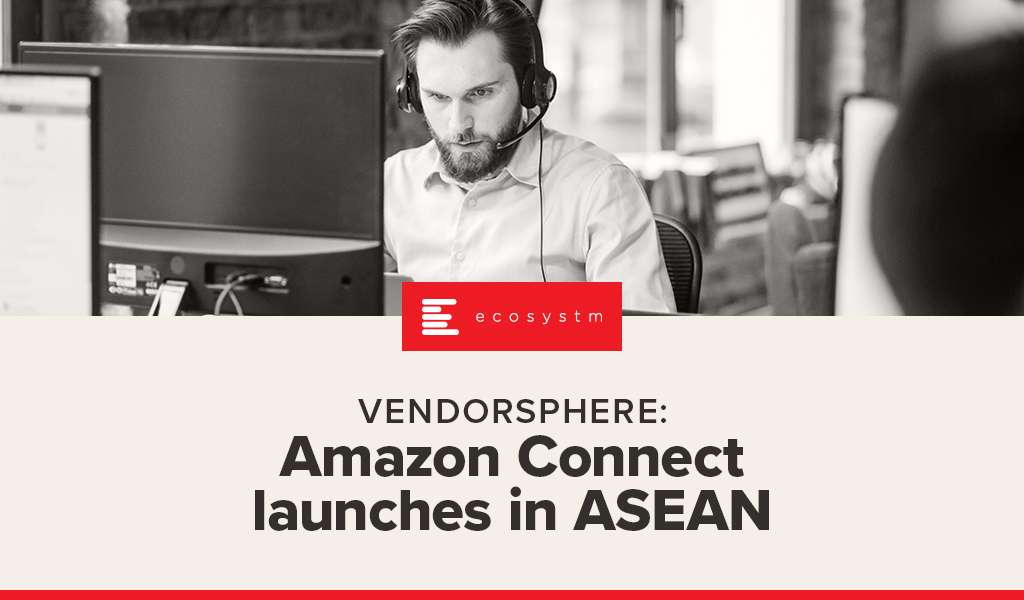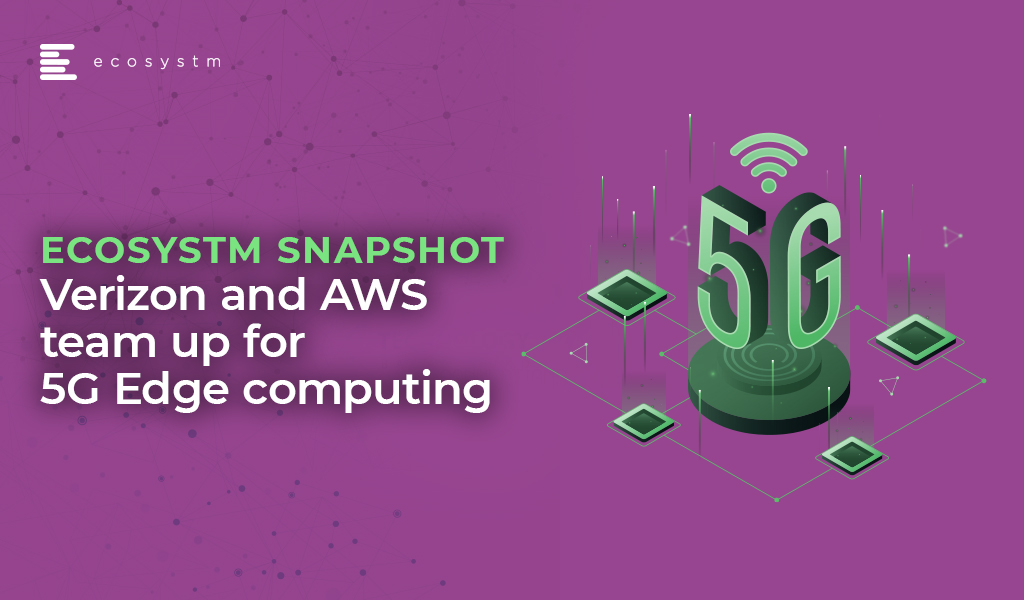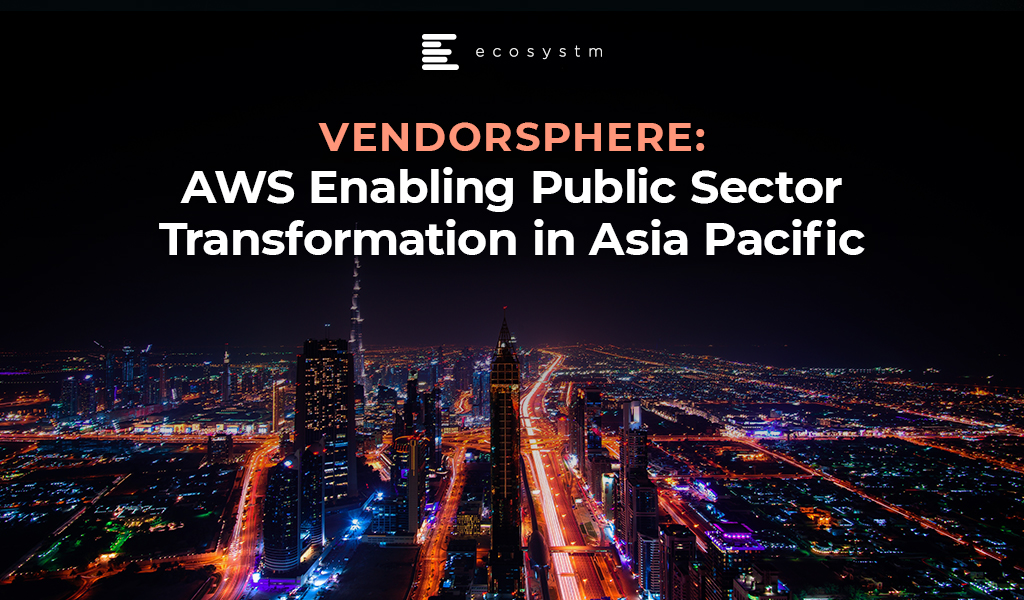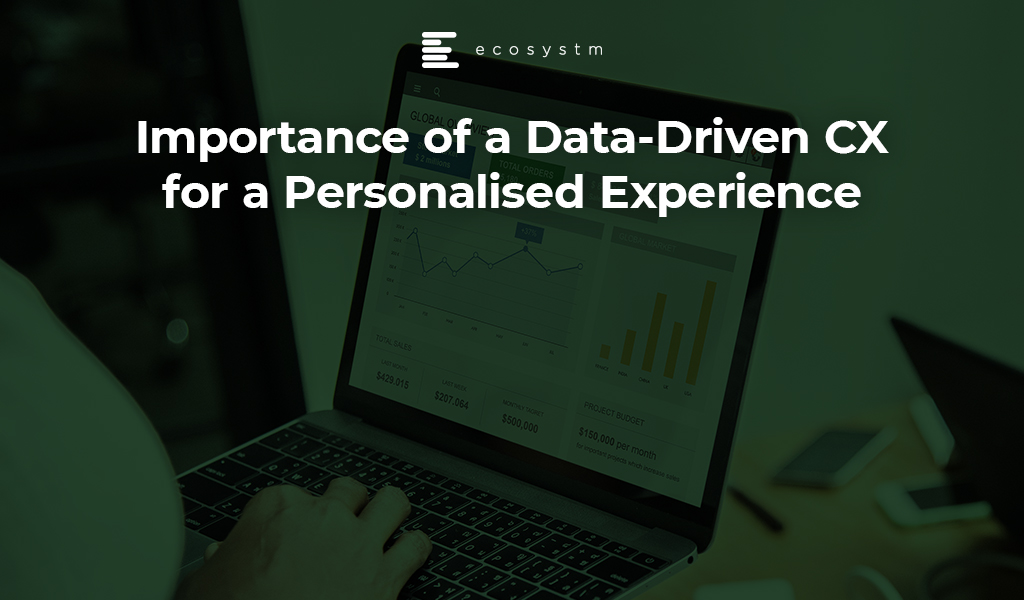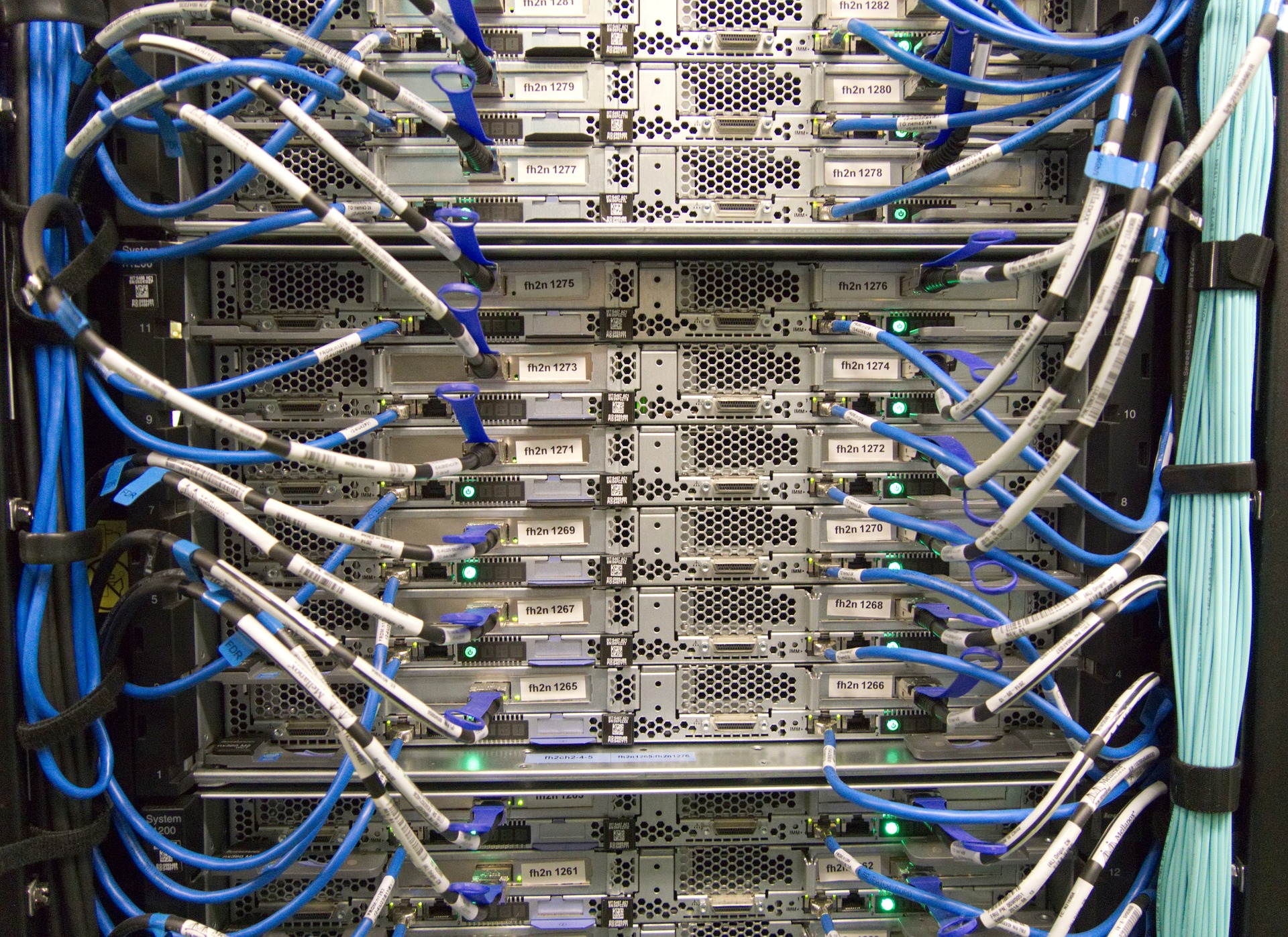On December 18, AWS launched Amazon Connect in ASEAN from the Singapore region. I was invited to the ASEAN launch of Connect in Singapore 3 weeks ago where Pasquale DeMaio, GM of Amazon Connect and Robert Killory, ASEAN Solutions Lead presented to analysts.
Pasquale told the audience that the Amazon Connect solution used today has been built over 10 years ago to serve Amazon’s internal needs of servicing millions of customer interactions for their e-commerce transactions. At that time Amazon could not find a solution that was pure cloud-based, cost-effective, scalable and that was easy to use. Since launching Amazon Connect a few years ago, AWS has seen not just small and medium enterprises using Connect – larger organisations have embraced the solution as well.
Amazon Connect has a list of notable clients – Intuit, Rackspace, John Hancock, CapitalOne, GE Appliances, Subway and many others. Intuit, as an example, has had difficulties running experiments in the past and proofs of concept were expensive, complex and time-consuming. With Amazon Connect these run on a test environment allowing their engineers to experiment and if they do not work out, it does not cost Intuit a lot of money to spin up a proof of concept. Philippines telecommunications provider, Globe Telecom wanted to automate and improve their services for their broadband and residential services. It was taking about 2-3 days from payment to the restoration of services. Amazon Connect was deployed to solve this problem by understanding the customer data when calls came through to the contact centre and by using APIs and the Connect suite of applications, there was deep integration with the CRM systems and other platforms that held various pools of data. This produced a faster and scalable way of integrating the payment process and customer service.
The demo of the solution showcased how features such as Amazon Lex can build conversational interfaces for an organisation’s applications powered by the same deep learning technologies like Alexa. With Amazon Lex and Polly, organisations can now build a chatbot without knowing or understanding code.
The Amazon Connect Solution – scaling to become more feature-rich
At ReInvent in Las Vegas in December 2019, Andy Jassy the CEO of AWS unveiled a new offering for their contact centre customers called Contact Lens. The solution is a set of machine learning capabilities integrated into Amazon Connect. The service can be activated through a single click in Connect and can analyse, transcribe calls including previously recorded calls. Jassy also talked about how it allows users to determine the sentiment of the call, pick up on long periods of silence, and times when an agent and customer are talking over the top of each other. These additions can help supervisors understand the challenges faced by agents that can then be addressed during training and coaching sessions. The machine learning models that power Contact Lens for Amazon Connect have been trained specifically to understand the nuances of contact centre conversations including multiple languages and custom vocabularies.
Several other announcements have also been made recently:
- Web and Mobile Chat for customers is a single unified contact centre service for voice and chat. Agents have a single user interface for both voice and chat, reducing the number of screens they have to interact with.
- Amazon Transcribe now supports 31 languages including Indonesian, Malay, Japanese, Korean, and several Indian languages. These are important languages as they expand further across ASEAN and the rest of Asia, given the diversity of languages spoken in the region. Contact centres can convert call recordings into text and analyse the data for actionable intelligence.
Deepening their relationship with Salesforce
At Dreamforce 2019 late last year, Salesforce announced that they will be offering AWS telephony and call transcription services with Amazon Connect as part of their Service Cloud call centre solution. The announcement indicates how the CRM world and the contact centre segments are starting to get closer. CRM vendors are starting to realise that whilst they own the agent at the desktop who have access to the CRM solution, the data from the calls and the actual calls are important. Voice/Telephony is also witnessing greater innovation with vendors in the contact centre space applying machine learning and AI to voice so that intelligence is gathered prior to the call coming to the contact centre and the agent is further empowered through prompts that they can apply when speaking to a customer. As CRM integrates deeper with contact centre solutions, the tight integration between these two solutions cannot be ignored. Salesforce is partnering to innovate in the voice space by applying machine learning at the core of all they do. This is a big announcement given the sheer size of both companies and how both companies are innovating in the contact centre space.
Cloud Contact Centre is high on the agenda in Asia Pacific
Ecosystm’s CX research finds that most organisations in Asia Pacific are at the inflection point of moving from an on-premise environment to a cloud model. Only 1% of CX decision-makers want to keep their contact centres on-premise – many organisations are evaluating which contact centre vendor they should use to migrate to the cloud. Some countries may see higher adoption than others. Australia and New Zealand have higher cloud contact centre adoption. In ASEAN many organisations are starting to build a wider CX strategy beyond the contact centre including areas such as customer journey analytics and data-driven personalised CX.
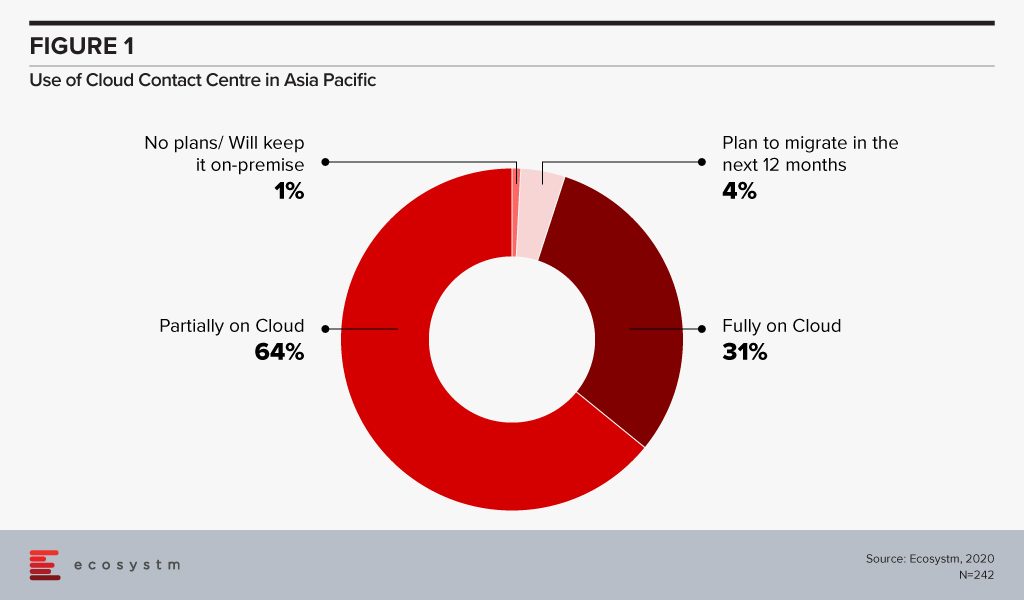
Ecosystm comments
In Australia, Amazon Connect has grown its customer base and these include some large enterprises. Big wins in the last 2 years include National Australia Bank and NSW Health. NSW Health shifted its IT service desk and shared services contact centres onto a new cloud-based contact centre platform as part of a broader digital transformation.
AWS has been gearing up for the launch in ASEAN over the last 6 months. The region is very competitive with some long-standing contact centre players having a large share and installed base in the large and medium enterprise accounts. The launch indicates how serious they are about growing their contact centre business in the region. There has been good progress so far in Singapore and the Philippines. Amazon Connect will look to grow its presence in Indonesia, Malaysia, Thailand, and Vietnam in the months to come. The market dynamics in each Asian country is unique and AWS will work with partners such as Accenture, Deloitte, DXC, ECS, NTT and VoiceFoundry to grow their presence in the region. Some of the more traditional partners will need education and upskilling to understand the Amazon Connect value proposition

The benefits of cloud computing are well documented, and it is at the core of most organisations’ modernisation and transformation initiatives. With the predicted increase in IoT uptake, and the associated increase in data collection and processing, technology providers are looking at methods to simplify, secure and speed-up IoT devices connected to the cloud.
5G Edge computing
To this end, in order to provide data processing closer to where it is needed, Amazon Web Services (AWS) and Verizon recently announced a partnership to bring the power of cloud computing closer to the edge with 5G network edge computing.
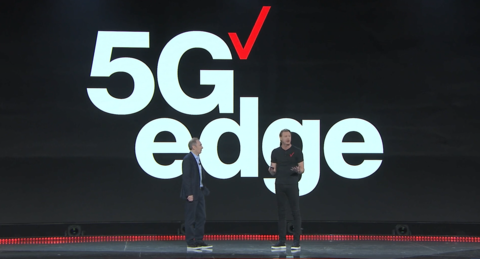
Edge computing brings various cloud services such as computing, networking and applications closer to the devices for local processing. It allows complex processing at the point where the data enters the network and eliminates round-trips involved in sending data from the edge, to the data centre where it gets processed and back to the edge again. To accomplish this, Verizon will offer 5G network and high-volume connections between users, devices and applications and will use AWS’s Wavelength service to deploy applications and process data at the edge. It will then seamlessly connect back to the AWS cloud.
The providers are piloting the project and aiming to deliver a wide range of services which depend on millisecond latencies.
New Demand, New Markets
By using AWS Wavelength and Verizon 5G Edge, the resulting edge computing solution will enable developers to build applications that can deliver enhanced user experiences like near real-time analytics for instant decision-making, improve services such as immersive game streaming, and automate robotic systems in manufacturing facilities.
The Ecosystm top 5 IoT Trends For 2020 report authored by Ecosystm Principal Advisors Francisco Maroto and Kaushik Ghatak stated that organisations are currently generating about 10% of their data outside a traditional data centre or cloud. This is predicted to dramatically increase in 2020 with IoT deployments fuelling investments in edge computing. The next year will see a sharp increase in IoT adoption as 5G rollouts gather steam, and this partnership is another indication of the increased interest in edge computing.
“As devices multiply and become smarter, 5G technology will become progressively more important to transfer data at a faster rate and drive edge computing. Real-time analytics will be performed at so many places along the network and infrastructure that IT management will be forced to rethink their distributed and enterprise computing strategies,” the report states.
Another Ecosystm report, the Top 5 Cloud Trends for 2020 report authored by Ecosystm Principal Advisors Claus Mortensen and Craig Baty mentions that “with IoT being a major part of the business case behind 5G, the number of connected devices and endpoints is set to explode in the coming years, potentially overloading an infrastructure based fully on data centres for processing the data.”
Edge computing will allow Cloud providers such as AWS to better cater to companies that need low latency, quick access to data and data processing. On the mobile side, it will allow them to push workloads to the device, reducing the backend workload and potentially enhancing data privacy.
The full findings and implications of the report ‘Ecosystm Predicts: The Top 5 IoT Trends For 2020’ and ‘The Top 5 Cloud Trends for 2020‘, implications for tech buyers and tech vendors, insights, and more are available for download from the Ecosystm platform.

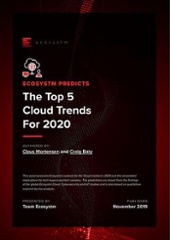
Authored by attending Ecosystm analysts, Sash Mukherjee (Principal Analyst, Government & Healthcare) and Sid Bhandari (Director, Consulting & Advisory Services)
The recently held AWS Public Sector Summit in Singapore showcased some of the regional AWS implementations, and how organisations are leveraging the Public Cloud differently.
In her keynote address, Teresa Carlson, Vice President, Worldwide Public Sector set the tone for the industry show cases by saying that a successful Digital Transformation (DX) starts from a radical rethinking of how an organisation uses cloud computing technology, people, and processes to fundamentally change business performance.
AWS Empowering the Public Sector
Carlson is clear on what Public Sector organisations must do and where AWS can help them:
- Define what Cloud refers to in the organisation. The first step in bringing about a Cloud First transformation is to be clear on the true definition of cloud computing.
- Create a “Cloud First” policy. To adopt a Cloud First policy, it is imperative to have leaders with a clear vision who really drive technology initiatives forward for all the right reasons like security, cost reduction, scalability, privacy and rapid acceleration of citizen services.
- Focus on Security & Compliance. AWS has global compliance certifications with 200+ services and key features focused on security, compliance and governance. New services such as the use of AI for threat detection have been implemented and are quickly evolving into a mainstream feature.
- Modify your Procurement vehicle. A formal cloud procurement model must be adopted instead of creating ad-hoc processes and a rush to adopt cloud to meet the specific needs of individual departments. AWS has the expertise to assist government IT leaders in selecting the right acquisition approach for their agency.
- Do not ignore Skills Development. Investing in cloud skills development – whether at the central IT level or in the individual business units in the Public Sector – is imperative, as roles evolve and new roles emerge. AWS has over the years offered free courses and industry certifications to Public Sector employees interested in learning the foundations of cloud computing, storage, and networking on AWS to advanced skills courses in emerging technologies such as AI.
Ecosystm Comment:
While cloud may have started off as a means of offsetting CapEx, its role has since evolved into being a major vehicle for DX. Several governments across the world have adopted Cloud First policies to spearhead innovation, increase agility, and improve citizen services. Cloud is increasingly seen as a foundation for many emerging technologies that governments are experimenting with and implementing such as AI, automation, Big Data analytics and Smart Nation initiatives.
The skepticism around Public Cloud security seems to have diminished over the years, with the perception that cloud providers use state-of-the-art technologies to protect their environment and continue to upgrade their security features in the face of new and evolving threats. However, the Ecosystm Cybersecurity study finds that nearly 53% of Public Sector and allied organisations that use Public Cloud feel that the security measures offered are sufficient. Leading cloud providers such as AWS should make it clear that essentially it is a shared responsibility and impress on organisations that the responsibility to secure their own applications and the interface with the Public Cloud ultimately lies with the deploying organisations.
Industry Use Cases
There were several industry use cases presented over the 2 days and it was heartening to see so many Asia Pacific examples of transformation. Tan Kok Yam, Deputy Secretary, Smart Nation & Digital Government Office shared that the key to a successful Smart Nation initiative is to build user-centric services rather than having an agency-centric approach, in his presentation on Singapore’s “The Moments of Life” app. Edwin H. Chaidir, IT Manager at WWF Indonesia presented on how AWS’s machine learning capabilities has helped the organisation to automate identification of specific orangutans in the wild, freeing up resources (money and time) to reinvest in other wildlife protection initiatives.
One of the implementation stories that impressed the Ecosystm analysts was the one shared by Rookie Nagtalon, Consultant for Digital Transformation at the Chinese General Hospital and Medical Center (CGHMC) in the Philippines, where he spoke about how they were able to bring about transformation in their patient life-cycle management. Healthcare in Asia Pacific is a diverse and disparate market with organisations at different levels of IT and business maturity – against a backdrop of different country-level goals and healthcare policies. It was encouraging to hear about a transformation project in a not-for-profit organisation from an emerging economy.
The challenges that healthcare organisations face are unique in many ways:
- Legacy systems that still work and hence there is no business case for replacing them
- Approximately 2/3rd of the IT budget going into running the basics, leaving limited resources for emerging technology adoption and transformation projects
- The shift to value-based healthcare and the need for data-driven insights to support it
- The unpredictability of the workload and the need for an agile IT infrastructure
- Security and compliance mandates that protect patient data and require storage of records over extended periods
Working with these challenges, how does a healthcare organisation bring about Digital Transformation?
Nagtalon’s team was assigned the task to bring about this transformation within a 10-month timeframe.
- The key challenge. An awareness that no one vendor can provide the entire gamut of functionalities required for patient lifecycle management. In spite of recent trends of multi-capability vendors, hospitals need multiple vendors for the hospital information system (HIS), ERP, HR system, document management systems, auxiliary department systems and so on. Each of these vendors have their own development team and infrastructure requirement, which stresses the internal IT resources. DX involving multiple legacy systems requires a step-by-step approach. The challenge is to identify the right systems to start the journey with.
- Vendor selection criteria. The need to find one solution that would enable seamless data sharing across the disparate systems. The vendor selection criteria that were used focused on ease of use and speed especially when working with multiple data sources. In keeping with the industry, the ability of the vendor to support mission-critical applications was put through the filter of what was referred to as ‘Code Blue’.
- The solution choice. A cloud solution that can empower teams and remove worries about the infrastructure. The hospital chose AWS as their transformation partner, who used a system interface blueprint to integrate data from their SAP ERP system, Medcurial’s MeRx HIS, 128 HR system, Canon’s documentation system and multiple diagnostics systems.
- The future roadmap. Enabling the organisation to be a Digital Hospital. The solution was implemented in 7 months and hit the right ROI requirements, reducing billing time and impacting the bottom line in terms of both recovery and revenue. It has created the base foundation for future plans such as device integration and the provider is well set on its journey of Cloud, IoT and Robotics.
Ecosystm Comment:
Nagtalon raised an important point when he was asked the key reason for the success of the project – executive buy-in. Transformation projects work best when it is enterprise-wide and senior management sponsorship is a must to enable that. However, he also mentioned humorously that he had become extremely unpopular during the implementation. This is where a centre-of-excellence with ‘champions to the cause’ from each key department helps. Organisations should look to engaging with the stakeholders early and to get their buy-in as well as the executive’s.
AWS’s marketing message to healthcare providers includes allowing them to focus on their mission and create their differentiation, and enabling them to incorporate new and emerging technologies. This implementation certainly ticked those boxes. What was particularly positive was the big thumbs up the AWS implementation team received. Organisations will increasingly partner with platform providers in their transformation journeys and implementation capabilities and best practice guidance will be the key differentiators for vendors.
As companies grapple with finding the right balance between managing multiple touchpoints and driving great customer experience (CX), the importance of getting the flow consistent – right communication to the client without spending too much time on re-directing calls or asking questions about a previous call or experience via a touchpoint – is becoming critical. The desire to impress a customer the first time they come into contact with a touchpoint is an area companies are looking to invest in. Using data as a means to understand customer sentiment before the call comes in will give the agent information to prepare them for making appropriate decisions during and after the call.
Case Study – Carsales
I was recently invited to an AWS Connect, Zendesk and Voice Foundry event in Sydney and it was great to hear from Carsales about how they re-invented CX. Prior to making the leap to deploying the solution from AWS Connect and Zendesk, they had been running their contact centre for years using a traditional contact centre platform. Some of the issues they have faced over the years included the following:
- Difficult and costly to customise
- Expensive support costs
- Expensive and difficult integrations
- Difficult to extract reporting
- Downtime for upgrades
- Difficult to use
These issues are common challenges posed by traditional contact centre platforms. High costs of maintenance and expensive integration costs are some of the challenges I hear of when speaking to end-users. The contact centre and CX industry are at an inflection point where organisations are evaluating how best to drive great CX and at the same time considering how to work with vendors that can help drive innovation in CX. Carsales eventually shortlisted 4 players before making the decision on which cloud provider to work with. They ended up working with Zendesk and AWS Connect.
Carsales recognised the need for a CX solution that could use the data they already have on their customers in Zendesk and Salesforce CRM systems to create a unique experience for each interaction. It was important for them to have a solution that would simplify data warehousing and analytics to make it easier to get a full view of the customer. By integrating the CRM application to AWS Connect as the CX orchestration engine. to bring the contact centre and CRM applications together helped Carsales deliver a personalised CX for their customers.
WHY AWS Connect?
These have come off the points mentioned by Carsales as to why they selected AWS Connect:
- Cloud-Based (accessible anywhere)
- No downtime for upgrades
- Access to Data (Lambda and APIs) via ZenDesk and Salesforce
- Easy UI
- Support from implementation partner Voice Foundry
- Affordable solution
- Access to great technology such as Speech to Text (Polly), Speech Recognition (Lex) and Analytics (Transcribe and Comprehend)
- Scalable and customisable call flows
In the global Ecosystm Cloud study, as depicted by the chart below, about 53% of organisations state that increased work processes and efficiency are a key benefit of the cloud. Nearly half the organisations rate flexibility and scalability and improved service levels and agility as the main benefits of a cloud deployment.
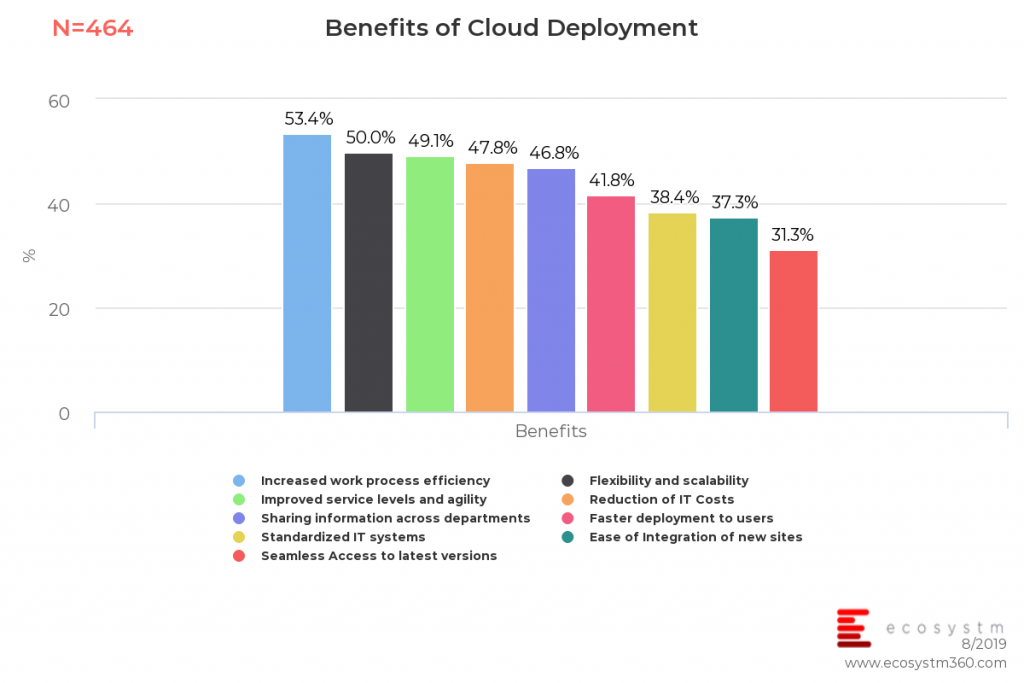
Implementation Learnings
What Carsales found about the AWS Connect solution, is how changes can be made easily. Most configurations can be made by the contact centre staff and there is no need to go to IT. Their primary aim was to deliver a personalised CX by accessing data from other internal systems (CRM, proprietary databases, etc) and the solution addressed this need.
The advice that Carsales gives to others implementing a Cloud Contact Centre are:
- Ensure that you have invested in the network to support voice over IP.
- Make sure that your headsets are compatible to ensure full functionality.
- Engage with a partner rather than implementing the platform on your own. Although you can implement AWS Connect solution on your own, it can be difficult. Voice Foundry was a great implementation partner.
The Importance of Data-Driven CX
The market is witnessing a shift where organisations are looking for new and more agile platforms for CX. The challenges, as highlighted by Carsales – such as existing solutions being difficult and costly to customise – are some of the common challenges we are hearing from organisations about the limitations of traditional telephony and contact centre solutions. Whilst the traditional vendors still have a majority share of the market, that is changing. Some of the new cloud contact centre vendors are offering new and dynamic ways of driving a better experience for the users of the technology – from agents to those that manage the contact centre solution. The ability to add agents when needed has become easier (without intervention from IT) and cloud provides better security due to the multiple back-ups and redundancies it offers. The ability to reduce maintenance and customise applications with new agile methodologies and APIs are driving a new era in the contact centre market. The single most important area is deep analytics. The ability to have deep analytics to understand the customer better as a starting point before a call, during a call and after the call is critical. Artificial intelligence can be used to better understand customer sentiment and detect trends in customer data.
The shift from traditional contact centres to cloud contact centres is happening and no longer just with mid-market companies. Large organisations are making the shift to the cloud as the benefits are apparent. Implementing a data-driven culture is key to driving a personalised CX. The tight integration between CRM databases and the applications in the contact centre is becoming more important than ever.

Two things happened recently that 99% of the ICT world would normally miss. After all microprocessor and chip interconnect technology is quite the geek area where we generally don’t venture into. So why would I want to bring this to your attention?
We are excited about the innovation that analytics, machine learning (ML) and all things real time processing will bring to our lives and the way we run our business. The data center, be it on an enterprise premise or truly on a cloud service provider’s infrastructure is being pressured to provide compute, memory, input/output (I/O) and storage requirements to take advantage of the hardware engineers would call ‘accelerators’. In its most simple form, an accelerator microprocessor does the specialty work for ML and analytics algorithms while the main microprocessor is trying to hold everything else together to ensure that all of the silicon parts are in sync. If we have a ML accelerator that is too fast with its answers, it will sit and wait for everyone else as its outcomes squeezed down a narrow, slow pipe or interconnect – in other words, the servers that are in the data center are not optimized for these workloads. The connection between the accelerators and the main components becomes the slowest and weakest link…. So now back to the news of the day.
A new high speed CPU-to-device interconnect standard, the Common Express Link (CXL) 1.0 was announced by Intel and a consortium of leading technology companies (Huawei and Cisco in the network infrastructure space, HPE and Dell EMC in the server hardware market, and Alibaba, Facebook, Google and Microsoft for the cloud services provider markets). CXL joins a crowded field of other standards already in the server link market including CAPI, NVLINK, GEN-Z and CCIX. CXL is being positioned to improve the performance of the links between FPGA and GPUs, the most common accelerators to be involved in ML-like workloads.
Of course there were some names that were absent from the launch – Arm, AMD, Nvidia, IBM, Amazon and Baidu. Each of them are members of the other standards bodies and probably are playing the waiting game.
Now let’s pause for a moment and look at the other announcement that happened at the same time. Nvidia and Mellanox announced that the two companies had reached a definitive agreement under which Nvidia will acquire Mellanox for $6.9 billion. Nvidia puts the acquisition reasons as “The data and compute intensity of modern workloads in AI, scientific computing and data analytics is growing exponentially and has put enormous performance demands on hyperscale and enterprise datacenters. While computing demand is surging, CPU performance advances are slowing as Moore’s law has ended. This has led to the adoption of accelerated computing with Nvidia GPUs and Mellanox’s intelligent networking solutions.”
So to me it seems that despite Intel working on CXL for four years, it looks like they might have been outbid by Nvidia for Mellanox. Mellanox has been around for 20 years and was the major supplier of Infiniband, a high speed interconnect that is common in high performance workloads and very well accepted by the HPC industry. (Note: Intel was also one of the founders of the Infiniband Trade Association, IBTA, before they opted to refocus on the PCI bus). With the growing need for fast links between the accelerators and the microprocessors, it would seem like Mellanox persistence had paid off and now has the market coming to it. One can’t help but think that as soon as Intel knew that Nvidia was getting Mellanox, it pushed forward with the CXL announcement – rumors that have had no response from any of the parties.
Advice for Tech Suppliers:
The two announcements are great for any vendor who is entering the AI, intense computing world using graphics and floating point arithmetic functions. We know that more digital-oriented solutions are asking for analytics based outcomes so there will be a growing demand for broader commoditized server platforms to support them. Tech suppliers should avoid backing or picking one of either the CXL or Infiniband at the moment until we see how the CXL standard evolves and how nVidia integrates Mellanox.
Advice for Tech Users:
These two announcements reflect innovation that is generally so far away from the end user, that it can go unnoticed. However, think about how USB (Universal Serial Bus) has changed the way we connect devices to our laptops, servers and other mobile devices. The same will true for this connection as more and more data is both read and outcomes generated by the ‘accelerators’ for the way we drive our cars, digitize our factories, run our hospitals, and search the Internet. Innovation in this space just got a shot in the arm from these two announcements.


